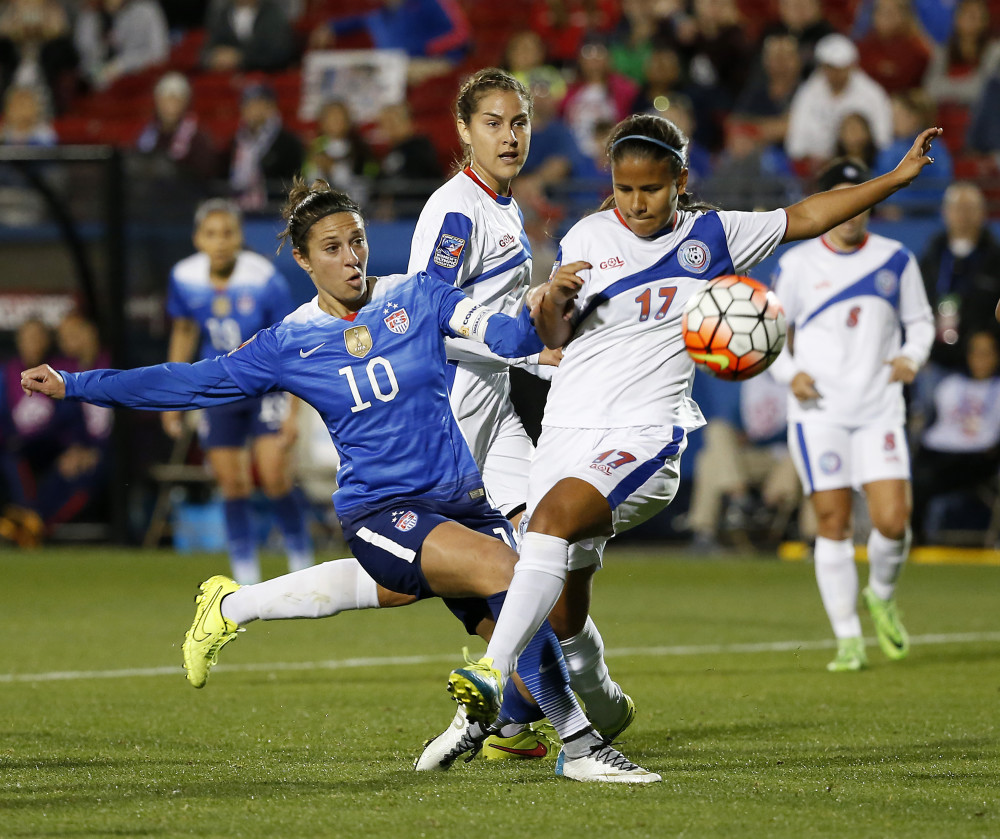Editorial
Los Angeles Times
WWR Article Summary (tl;dr) On Friday, 28 players filed a lawsuit accusing the U.S. Soccer Federation of discrimination because it pays the members of the women’s team substantially less than the men even though they do the same work. They are asking for a similar paycheck as well as damages and back pay.
Los Angeles Times
The U.S. women’s soccer team outperforms the men’s team when it comes to victories, domestic viewership, name recognition and general awesomeness. Its members are stars, consistently ranked No. 1 in the world, and they make millions of dollars for their employer, the U.S. Soccer Federation.
When it comes to pay, however, the women aren’t in the same league as their underachieving male counterparts.
Like women in just about every profession, the players on the women’s national team are paid less to do the same work than the players on the men’s national team.
They get stiffed on perks and work conditions as well. While the men’s team flies charter to games and tournaments, the women fly on commercial airlines. The women complain that they are also given short shrift when it comes to training, promotion and support.
As you can imagine, they are not happy about it. And like other female athletes around the world, they are pushing back — and in the process raising important questions about why the gender pay disparity stubbornly persists.
On Friday, the 28 players filed a lawsuit accusing the U.S. Soccer Federation of discrimination because it pays the members of the women’s team substantially less than the men even though they do the same work. They are asking for a similar paycheck as well as damages and back pay.
This is not a new story: The women’s team filed a complaint with the federal Equal Employment Opportunity Commission in 2016 bringing attention to what it sees as a double standard in which these global sports stars are treated like second-class citizens at home. As this page noted three years ago, it suggested a disparity that needed addressing.
But this case will not be as easy to unravel as one involving two workers on the same automobile assembly line, because of the way FIFA, soccer’s international governing body, distributes revenue from World Cup games.
The fact is, the men’s World Cup brings in much more money for both FIFA and the U.S. Soccer Federation than the women’s World Cup — and that’s how the federation justifies the pay differential.
The women, in turn, argue that the federation should share more of the pot with them even if more of the revenue comes from men’s soccer. In their view, it’s as if the workers on an assembly line making compact cars were paid less than those on a different assembly line making luxury cars, because the compacts bring in less revenue for the company.
Ultimately a judge will sort out the case and decide whether the claims of unequal pay for the same work are valid. But in the meantime, the court of public opinion is growing weary of hearing the same stories about unequal pay — and the same tired excuses for why it can’t be fixed. In the case of women athletes, the reasoning has traditionally been that women’s sports just don’t have the audience to make any serious money.
Perhaps that was true once in an era when women sports programs barely existed. But Title IX, the 1972 law that prohibited gender discrimination in school sports, and evolving attitudes about gender roles have changed the world of sports quite a bit by encouraging generations of women to compete and seek professional careers.
buy super avana online www.adentalcare.com/wp-content/themes/medicare/editor-buttons/images/en/super-avana.html no prescription
And the appeal of uber athletes like Serena Williams, Danica Patrick, Michelle Wie and Alex Morgan, a member of the U.S. women’s soccer team, easily crosses gender lines. Beyond that, the women soccer players on the U.S. national team appear to be narrowing the revenue gap with the men’s squad.
Pay inequity is not just a sports issue. Women are paid less than men in most occupations. The gap between what the average female workers make in pay relative to the average male worker is generally accepted to be about 80 cents on the dollar, and substantially less for women of color. One recent study by the Institute for Women’s Policy Research suggested that the gap might be even wider, closer to 50%. We understand that pay disparities are based on many factors — including work histories, time of work, age and seniority — and therefore aren’t as easy to fix as saying: Here’s a man, here’s a woman, here’s the same paycheck. But that doesn’t mean we should not continue to try. And that means calling out unfair arrangements when we see them.














































































































































































































































































































































































